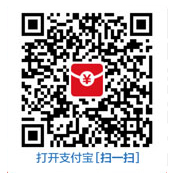I had no difficulty in identifying him, standing there with the book gripped firmly in one hand.A book had seemed the natural choice, as it had been those notes in the margins of another that had brought us together in the first place. He was right on time, just as we had scheduled. I liked that. It seemed to fit well with everything I had discovered from corresponding with him.
1.请问老师,红体字的句型结构和中文意思?其中,as引导什么从句?且“another”又指代什么?
2. 蓝色句子讲的是“真人(现实见到书友后的状况)”和“之前通信来往发现的相匹配”那样句首it指代的是“见面后的状况”,而不是形式主语?
I had no difficulty in identifying him, standing there with the book gripped firmly in one hand.A book had seemed the natural choice, as it had been those notes in the margins of another that had brought us together in the first place. He was right on time, just as we had scheduled. I liked that. It seemed to fit well with everything I had discovered from corresponding with him.
1.请问老师,红体字的句型结构和中文意思?其中,as引导什么从句?且“another”又指代什么?
红体字部分是一个主从复合句,as引导缘由状语从句讲解为何选择一本书作为辨认书友的标志。as从句是一个it had been...that...强调句,只是用了过去完成时态而已。another指的是another book,即不同于书友手里的那本书的另一本书,即“我”的某一本书,泛指不可以用定冠词,我不止一本书。大家念书有感,会在书的空白处写下感想、评论等,大家会和书友交流念书的感想、领会。这种交流使大家相识。我不可能了解他们的书页上是不是有我们的评论、注解,但我的书上有。翻译的时候another不必译出。
译文:选择一本书(作为辨认的标志)好像是非常自然的,由于,正是书页空白处的那些评论、注解使大家刚开始相识。
2. 蓝色句子讲的是“真人(现实见到书友后的状况)”和“之前通信来往发现的相匹配”那样句首it指代的是“见面后的状况”,而不是形式主语?
最后一句的it不是形式主语,it是人称代词,指代前面一句话:He was right on time, just as we had scheduled. 即他们是个诚信的人,说什么时间到就什么时间到,这和我从与他信件来往中发现的完全吻合。



